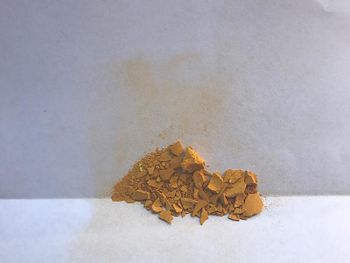Difference between revisions of "Lead picrate"
From Sciencemadness Wiki
| Line 97: | Line 97: | ||
| LC50 = | | LC50 = | ||
| MainHazards = Explosive, toxic, harmful for the enviornment | | MainHazards = Explosive, toxic, harmful for the enviornment | ||
| − | | NFPA-F = | + | | NFPA-F = |
| − | | NFPA-H = | + | | NFPA-H = |
| − | | NFPA-R = | + | | NFPA-R = |
| − | | NFPA-S = | + | | NFPA-S = |
}} | }} | ||
| Section7 = {{Chembox Related | | Section7 = {{Chembox Related | ||
Revision as of 22:18, 14 February 2019

| |

| |
| Names | |
|---|---|
| IUPAC name
lead(2+);2,4,6-trinitrophenolate
| |
| Systematic IUPAC name
2,4-Dinitro-6-(oxo{[(2,4,6-trinitrophenoxy)-λ2-plumbanyl]oxy}ammonio)phenolate | |
| Identifiers | |
| Jmol-3D images | Image |
| |
| Properties | |
| C12H4N6O14Pb | |
| Molar mass | 663.4g/mol |
| Appearance | Orange, dense powder |
| Melting point | Detonates |
| Boiling point | Detonates |
| barely soluble in water at 20°C | |
| Hazards | |
| Related compounds | |
| Related compounds
|
Picric acid, Lead styphnate, Lead(II) aide |
| Except where otherwise noted, data are given for materials in their standard state (at 25 °C [77 °F], 100 kPa). | |
| Infobox references | |